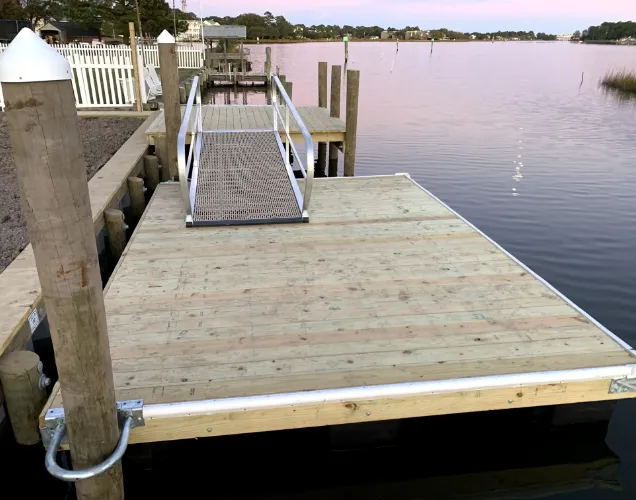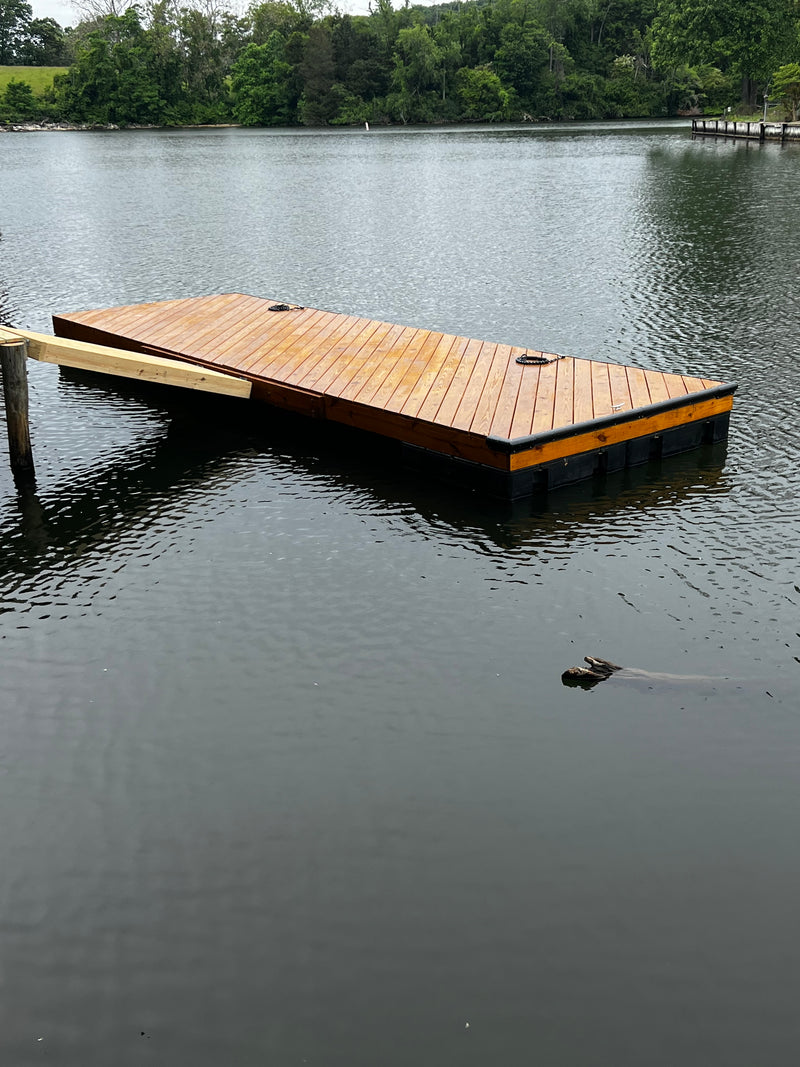Enhance Your Water Accessibility With Easy-To-Install Floating Docks
The setup of floating docks provides a useful remedy for improving water access, permitting users to engage in different activities with convenience and convenience. As we explore the advantages and types of floating anchors, as well as the installation process and maintenance ideas, it becomes clear that such improvements could dramatically transform your beachfront experience.
Advantages of Floating Docks
Floating anchors deal numerous advantages that make them a significantly prominent option for marinas, waterside homes, and entertainment centers. One of the main advantages is their flexibility to fluctuating water levels. Unlike dealt with anchors, floating anchors rise and autumn with the trend, ensuring constant access no matter altering water problems. This function dramatically decreases the danger of damage from extreme climate events and disintegration.
Furthermore, floating anchors are less complicated to keep and mount. Their modular layout enables for simple assembly and disassembly, which is especially helpful for seasonal use. This versatility likewise promotes transport and storage space when not being used.
The building materials utilized for floating docks, such as polyethylene and aluminum, are immune to rust, making them resilient and durable. This durability equates to decrease maintenance prices in time, ensuring a much better roi.
Moreover, floating anchors can improve the visual allure of beachfront buildings, giving a seamless link in between land and water. dock company. With their flexible layout, they can accommodate different tasks, from boating to angling and swimming, thus taking full advantage of the energy of beachfront spaces. Generally, floating anchors stand for a practical and efficient remedy for boosting water access
Types of Floating Docks
Different kinds of floating anchors accommodate different requirements and applications, each created with specific features to enhance capability and performance. The most typical types include modular, hinged, and roll-in floating anchors.
Modular floating docks include interlocking sections that enable customization in size and setup. Their flexibility makes them appropriate for property and industrial applications, fitting numerous water degrees and conditions.
Hinged floating docks are developed to drop and climb with changing water levels. This kind is especially useful in areas with changing trends or seasonal water degree modifications, making sure stability and availability throughout the year.
Roll-in floating docks feature wheels or rollers that make it possible for very easy installment and elimination. These docks are optimal for shallow waters, permitting customers to easily navigate them in and out of the water, making them a popular selection for personal lakefront residential properties.
In addition, there are specific floating anchors for particular functions, such as watercraft lifts, swimming platforms, and angling anchors. Each kind is crafted to fulfill unique demands, making sure that users find the perfect remedy to enhance their water accessibility and recreational experiences.
Setup Process Review
Understanding the various kinds of floating anchors is vital for effective setup, as each variation has special demands and considerations. The setup procedure normally starts with site analysis, where one need to review water deepness, potential obstacles, and local regulations. dock company. Appropriate preparation makes sure that the dock will be functional and compliant
Next, prepare the location by getting rid of debris and marking the installment border. This step is important for determining the dimensions and positioning of the dock family member to existing frameworks. Depending on the dock type, anchoring systems may include either weighted anchors or screw heaps, making sure stability and safety.

After assembly, the dock should be meticulously placed in the water, ensuring it is degree and correctly secured. Perform a detailed evaluation to make sure all connections are secure and that the dock is all set for use. With appropriate installment, floating docks can use enhanced access and enjoyment for years to find.
Maintenance Tips for Durability
To maintain your floating dock in leading condition, it's necessary to remain on top of routine maintenance tasks. Begin by evaluating the dock's framework for any indications of wear or damages, particularly after extreme weather condition events. Seek fractures, loosened installations, or any changes abreast that could jeopardize security.
Frequently tidy your floating dock to stop algae buildup and debris buildup. Utilize a mild scrub brush and a non-toxic cleaner to preserve the surface without causing damage to the setting. In addition, inspect the drifts for punctures or leaks, as these can impact buoyancy. If you observe any problems, without delay repair service or replace the afflicted elements to make sure optimal performance.
Over time, anchors can become loose due to shifting water levels or debris, which might lead to dock instability. By adhering to these upkeep pointers, you can improve the long life of your floating dock, ensuring it remains a trustworthy water accessibility option for years to come.
Enhancing Your Waterside Experience
The enjoyment of waterfront living is find here greatly intensified by thoughtfully enhancing your floating dock experience. A properly designed dock offers not only as a practical area for mooring boats yet also as a welcoming location for relaxation and leisure. To enhance your floating dock, think about incorporating functions that cater to your way of living.

Lighting is one more necessary component for enhancing your dock experience. Set up ambient LED lights to produce a welcoming environment throughout evening hours. Additionally, safety should not be ignored; make certain that your dock is outfitted best site with strong barriers and non-slip surface areas.
Verdict
To conclude, floating anchors stand for an effective service for enhancing water accessibility, offering convenience and stability in numerous water environments. Their modular layout facilitates quick setting up and modification, satisfying diverse recreational tasks. Resilient materials make certain resistance to deterioration, advertising longevity and minimal upkeep. By incorporating floating docks, both performance and visual charm can be enhanced, resulting in an enriched beachfront experience that sustains year-round interaction in water-related searches.
The setup of floating anchors provides a sensible remedy for enhancing water access, allowing individuals to involve in numerous activities with convenience and comfort. Unlike fixed anchors, floating docks rise and fall with the tide, article ensuring constant access regardless of transforming water problems.In addition, floating anchors can enhance the visual appeal of waterfront buildings, giving a smooth link between land and water. Generally, floating docks stand for a efficient and practical service for boosting water access.
By sticking to these upkeep pointers, you can boost the longevity of your floating dock, ensuring it remains a reliable water gain access to solution for years to come.